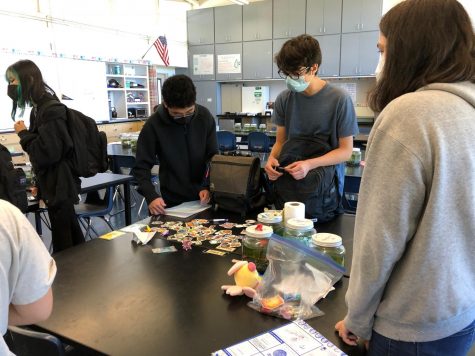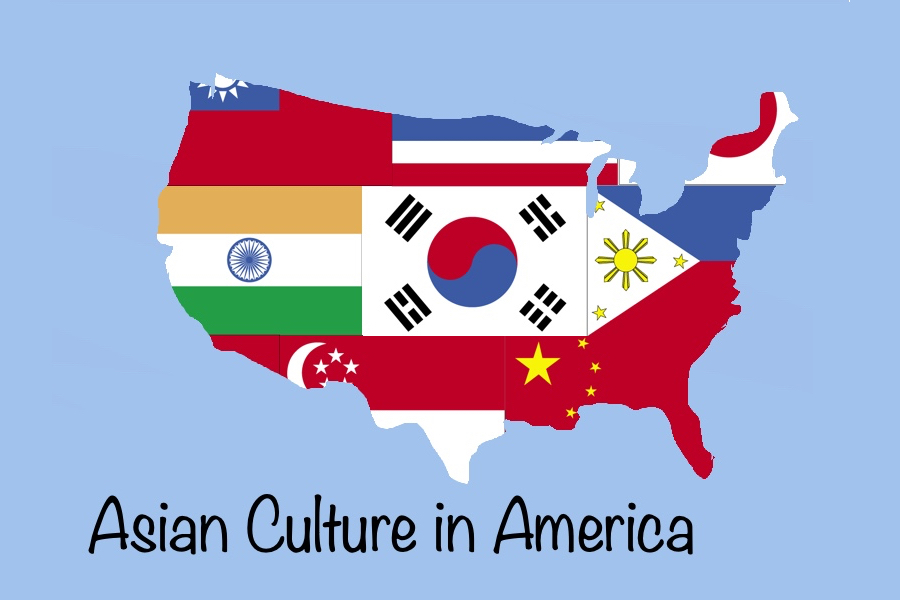The United States has always been known as the cultural melting pot of the globe: the assimilation of various cultures into one nation. Nowhere in the nation is this notion stronger than in California.
Out of the 50 states in 2020, according to the United States Census Bureau, California boasted the second-highest diversity index (DI) at 69.7 percent, while also having a significantly larger population than the leader Hawaii (76.0 percent DI) and the rest of the states.
The San Francisco Bay Area (67.4 percent DI) and Southern California around Los Angeles and San Diego (68.3 percent DI) have specially developed into culturally mixed societies with a large multicultural demographic.
Stemming from the West Coast, Asian pop culture has quickly become one of America’s most influential foreign cultural movements in the last couple of decades, as popular food and entertainment from Eastern Asia have spread throughout the US.
One of the most longstanding foreign cuisines in the U.S. is Japanese food. Sushi, in particular, has become especially popular, with the sushi restaurant market in the U.S. worth $22.5 billion in 2021 since arriving in the 1960s, according to IBISWorld.
There is some debate about when sushi came to the U.S., but, according to Michelin Guide, in 1966, Noritoshi Kanai established Kawafuku, a sushi bar — a term coined after popular use years later. Along with Kawafuku, many other sushi bars would also open and aid Japanese cuisine’s popularity in Little Tokyo, Los Angeles.
While Los Angeles became the center for American sushi bars in 1966, Fuji Sukiyaki and San Raku in San Mateo, California, served sushi and Japanese cuisine for years prior with positive reviews, according to Jonas House, “Sushi in the United States, 1945-1970.”
“I think Asian foods are extremely popular because of the high Asian population in places like the Bay Area, which bring Asian food businesses with them,” said Joshua Lin, a sophomore at Carlmont High School.
This relationship makes sense since Asian immigrants would create cultural bubbles such as Little Tokyo in Los Angeles or Japantown in San Francisco that allowed Asian food to establish itself and eventually frontier into the rest of the nation.
While Americans were initially hesitant to try exotic Asian cuisines such as sushi (eating raw fish was previously unheard of), the gradual widespread establishment of Asian populations and cultures served as a basis for their growing presence and popularity.
This system of Asian immigrants introducing new cuisines to American culture does not stop at Japanese food. Among Chinese, Korean, Thai, Indian, and other Asian foods, a more recent example is the explosive popularity of Taiwanese bubble tea in the U.S.
While “boba” tea appeared in Taiwanese night markets as a combination of tapioca, tea, and shaved ice as early as the 1980s, it was not until the dawn of the new millennium that boba tea joined the American melting pot.
Like the growth of sushi and Japanese cuisine, boba tea had an increasingly large presence in the U.S. after immigrants brought a demand for their native foods. The boba tea industry also grew with other cafes such as Starbucks, both offering mid-day refreshments and that mellow cafe environment.
“A lot of people at Carlmont like to get boba after school, including my friends and I,” Lin said. “In fact, we sometimes get together just to hang out and have boba.”
With the bubble tea industry at an all-time high, Garden Grove near Los Angeles had the highest person-to-boba store rate, with one shop for every 5,200 people in 2020 (towardsdatascience.com). For reference, in 2020, the US had a Starbucks store for every 21,500 people.
Along with cuisine, Asian culture has also impacted the U.S., with the popularity of anime since the 1960s. While it has a loose definition, an anime is a Japanese animated show or movie.
Anime first entered American culture when titles like “Astro Boy” (1963), “Kimba the White” (1965), and “Gigantor” (1963) attracted the attention of American entertainment companies such as NBC. These companies obtained the license to broadcast the shows; a method still used to provide anime to America, according to rightstufanime.
Studio Ghibli was one of the leaders of anime’s expansion into the U.S. by producing “Spirited Away” (2001), the first anime to win the “Best Animated Film” academy award. “Kiki’s Delivery Service” (1989) showed that the anime industry was aware of the growing American audience, as Studio Ghibli used more western settings and ideas.
“I remember watching the Studio Ghibli movies as early as elementary school,” said Taiyo Kobayashi, a Carlmont junior that enjoys watching anime. “Those films were the first anime I ever watched.”
As Studio Ghibli continued the anime industry for a younger audience, other anime shows produced anime for various audience maturities (PG, PG-13, R, etc.) in addition to children. Additionally, anime has adopted its own genres, including comedy, shonen, isekai, and others.
The anime industry in the US has seen rapid development in recent times. “Demon Slayer the Movie: Mugen Train” earned the highest-grossing opening weekend for a foreign-language film in the US ever with around $20 million in 2021. The movie also earned the second-highest box office revenue for an anime film in the US with about $45 million and is the highest-grossing anime movie globally with around $500 million (checked across multiple sources). This becomes even more impressive when considering the movie was released during COVID-19 quarantine.
“Anime has well-established itself as a part of American culture with the amount of content for American audiences,” Kobayashi said. “There are English voice-overs and translations for every anime, and also American produced anime cartoons.”

Anime’s cultural presence in America is clear at Carlmont, where many people enjoy watching anime. Kobayashi also mentions that he has made many friends at Carlmont through their love for anime.
Many clubs celebrate Asian culture at Carlmont, including the Chinese Culture Club, Indian Club, J-Pop Club, Anime Club, Korean Pop Culture Club, and Nisei Japanese American Club.
“We like to talk about and enjoy Japanese culture with others, whether it be about music, shows, or something entirely different,” said Aiden Abrari, president of the Carlmont J-Pop Club, which has been around since 2015. “Nothing’s really off the table for what we could talk about each week, which makes the club even more fun.”
As mentioned by Lin, the popularity of Asian culture in the Bay Area is partially due to the Asian population. It is also important, though, to recognize the popularity among non-Asian people as well.
Christina Ree, program manager of the San Diego Asian Film Festival, refers to this in the recent popularity of Asian American films.
“I think that Asian American films are really successful now partly because American audiences are getting more global,” Ree said. “They want something genuine and are absorbing Asian culture whether its anime or Kpop.”
In cases such as Asian food or entertainment, the phenomenon was brought to the U.S. by immigrants but was popularized in the U.S. by American audiences. This trend makes Asian cultures a part of American society and culture rather than an independently separate thing.
It will be exciting to witness how more cultures from around the world, not just Asia, will make their way into the American melting pot in the future.













